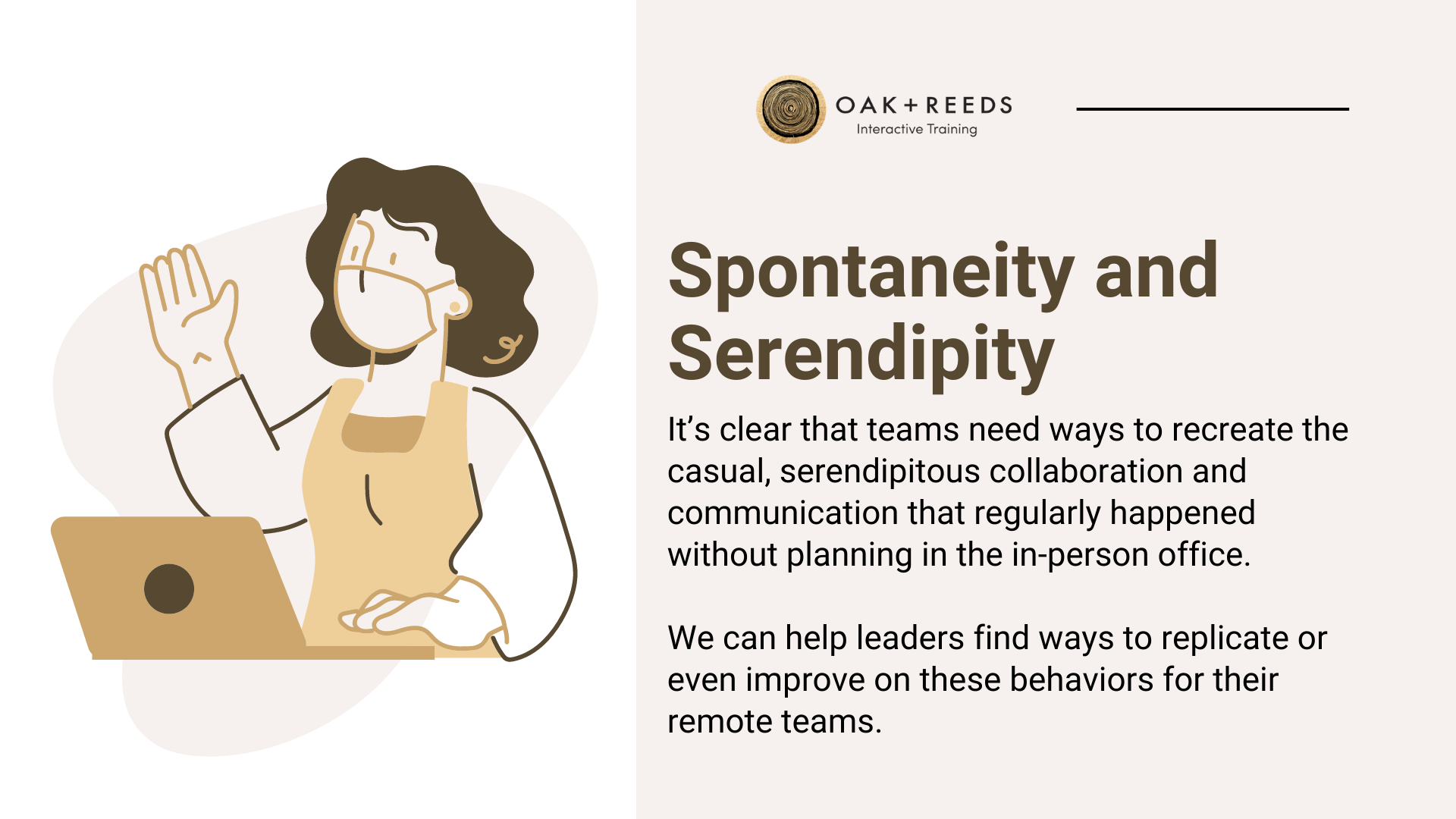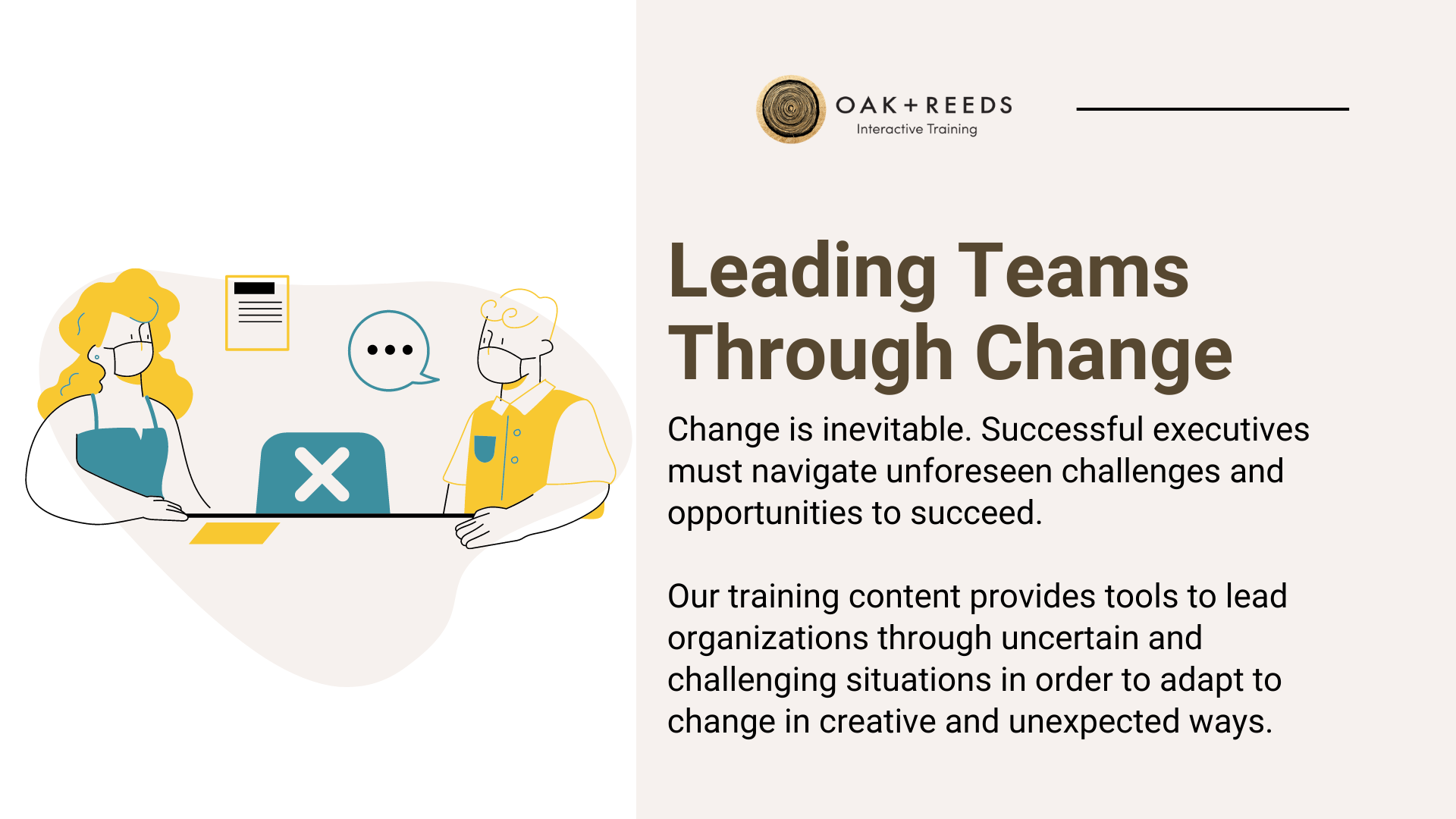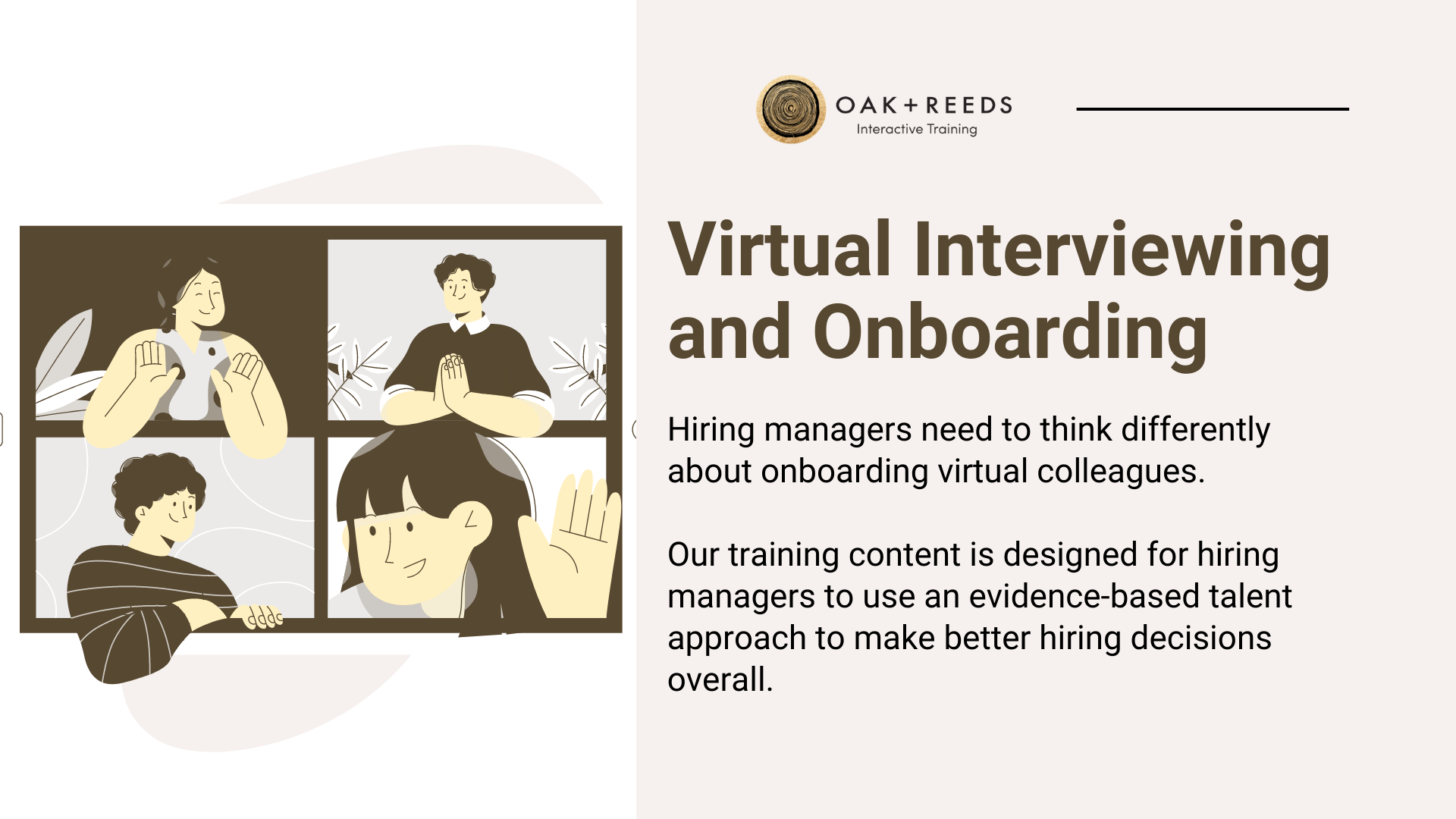In the past year, many leaders have had to scramble to move their teams to working fully remote. Lost in that scramble was the important discussions about what it means to efficiently work in a distributed way. Also missing were important discussions on how to ensure that the time away from the office is a period of personal growth rather than one of isolation, depression, and team fracturing.
The new year signals an opportunity to have those meaningful conversations. As we continue to adapt to a remote-first work setup, how do we make sure our people are equipped to balance productivity with their personal wellbeing? How do we equip our teams to successfully navigate virtual communication and collaboration? How do we ensure that 2021 is a year we look back on as one of focused growth and development instead of a chaotic, stress-inducing mess?
Here are Oak and Reeds’ four learning priorities for successful teams in 2021:
Priority 1: Virtual Communication and Collaboration
In our post on Managing a Remote Workforce, we recommend teams place a premium on video meetings rather than audio-only conference calls.
“7% of communication is the words used, 38% is the tone and inflection and a staggering 55% is body language. If you are only using email, you lose 93% of the message. If you only use a phone, you lose 45% of the message.
Setting up video conferences will allow you to get nearly 100% of the message you would if you were in the room with them.” (Rhythm Systems)
Video calls are the most effective solution to enable human connection in a time of distance and isolation. However, with reports of Zoom fatigue draining energy from teams, we’re learning that our best option, video communication, weakens the psyche in complicated ways.
Being in back-to-back-to-back video calls requires sustained and intense attention. Teams need to pay attention not only to what’s being said, but to how it’s being delivered, how their other team members are responding to the information, and how you’re presenting yourself to your team. People can start to feel like each meeting is a “performance” rather than a genuine moment of healthy communication and exchange.
Zoom meetings, instant messages, emails, texts, phone calls, and any number of other online collaboration tools have made staying connected more exhausting than ever before.
Our Solution
Oak and Reeds provides training content that helps our clients avoid the ways virtual platforms distort words, tone, body language, and emotions. We aim to help clients bring more humanity into their live, online interactions.
Change leaders, in particular, need to prepare for a remote-first work setup by focusing on creating norms that support an empowered remote workforce.
Team infrastructure can be strengthened by returning to company values and translating those into “the new normal” - what does it all mean for a remote team to communicate in these new ways for the long haul?
Teams that have clear behavioral expectations rooted firmly in company values thrive in a remote setting. Clear remote communication norms make sure that everyone is on the same page and allows teams to “assume good intent” in communication.
Our training content teaches simple, practical, and memorable techniques you can use to spice up your virtual collaborations, better engage your audiences and increase the efficiency of your online gatherings.
Priority 2: Spontaneity and Serendipity
Have you heard about “Yes, and”? If not, it’s time to learn how this concept from the world of comedic improvisation is the key to unlocking your team’s creative potential.
A little context: "Improv" is the practice of unplanned interaction with others. That means that improvisation is a skill practiced by everyone, every single day. As much as we would like to rehearse and practice our lines for critical moments at work, there's no script sitting on our desk each morning, outlining all the things we'll say and do throughout the day. Learning simple tools for improvising better is a highly effective way to improve individual and team outcomes in any industry.
This need to improve creativity is even more essential now that many of our organizations are moving to a remote-first or distributed working style. Most unplanned interactions in in-person offices include bumping into a colleague in the hallway or meeting over the water cooler.
How do you recreate that with remote teams?
This year, we ask our clients:
Where can you go for a spark of inspiration?
Where can you go (virtually) for a fresh perspective?
How can you informally share ideas?
How do you generate virtual serendipity to spark new ideas and discussions on critical topics?
Our Solution
Our training content provides teams the appropriate tools to encourage serendipitous interactions, spark new ideas, and brainstorm as a remote team. This is a high-energy, fun, and exciting introduction to a variety of ways you can add spark, excitement, and energy to your virtual collaboration “toolbelt”.
Priority 3: Leading Teams Through Change
Change is inevitable. Successful executives must navigate unforeseen challenges and opportunities to succeed in senior leadership roles. This year, we expect teams to continue adapting to remote work and find a balance between productivity and wellbeing.
Our training content is designed to help leaders communicate and implement organizational change. We aim to provide critical change planning tools and help leaders adopt these frameworks to their own organizations.
Learners will be taught tools and techniques to confidently work and lead organizations through uncertain and challenging situations in creative and unexpected ways.
Priority 4: Virtual Interviewing and Onboarding
Interviewing and onboarding in a remote-first organization allows teams to widen their talent pool and engage with people regardless of their physical location. This lets businesses scale their current processes, allowing teams to diversify their teams catering to new flexible working arrangements.
Bringing in new talent through recruitment is the most efficient way to change or grow company culture in positive ways. Organizations are able to bring in new team members who reflect diversity of thought approaches, backgrounds, and skill sets in ways previously unavailable. However, teams need to be mindful of codifying their company values and making sure that these reflect in their recruitment and onboarding practices.
Our Solution
Our training content is designed for hiring managers to gain a mastery of the planning, execution, and evaluation of interviews. Learners will gain an understanding of the structured interviewing process to increase consistency across virtual interviewers. They will learn techniques and tools to reduce bias in feedback and debriefing conversations. Additionally, they will learn how to use an evidence-based talent approach to make better hiring decisions overall.
The goal is to ensure that hiring managers have an overall mastery of the start to finish process for opening a role all the way to onboarding.




